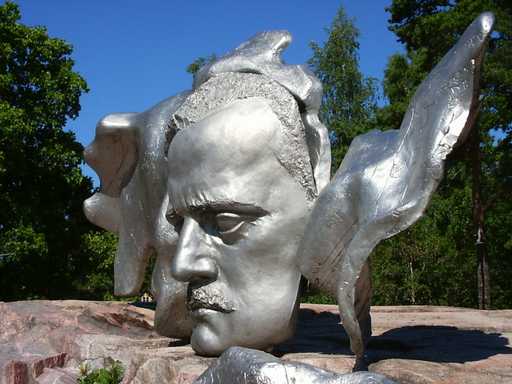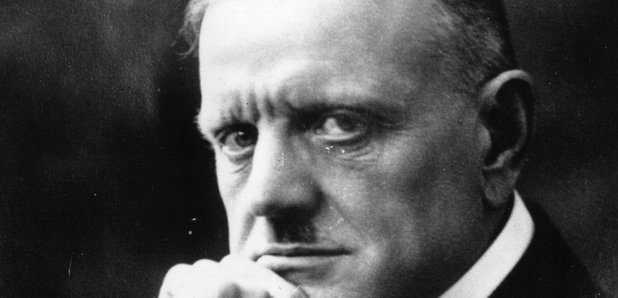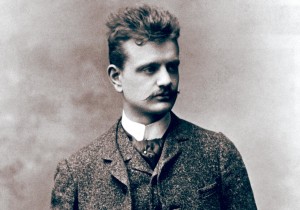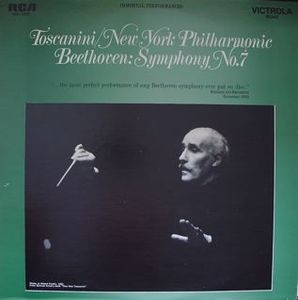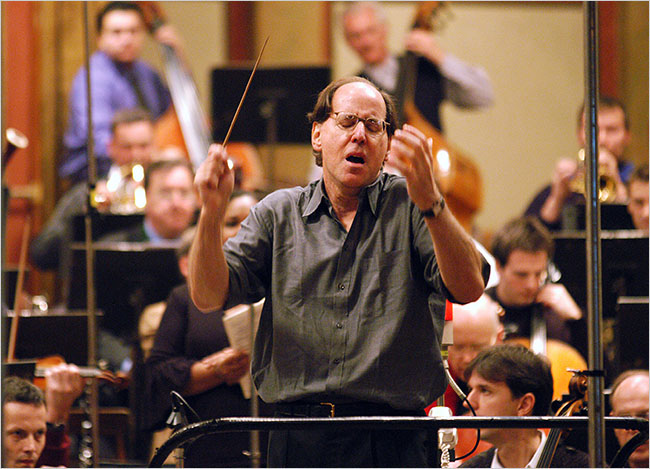
Remembering Gilbert Kaplan
Gilbert Kaplan, the American millionaire business man, publisher, amateur conductor, and Mahler scholar passed away on New Year’s Day following a battle with cancer. He was 74.
In 1967, at the age of 26, Kaplan founded the inside Wall Street magazine, Institutional Investor. Around the same time, he became obsessed with the music of Gustav Mahler, particularly Mahler’s Symphony No. 2 “Resurrection” (featured in this past Listeners’ Club post). Kaplan described his first encounter with the work at a Carnegie Hall concert with the American Symphony Orchestra, conducted by Leopold Stokowski:
I walked into that hall one person and I walked out a different person – I felt as if a bolt of lightning had gone through me.
Following this transformative experience, Kaplan was determined to conduct the piece, although he had no experience in front of an orchestra. He took a private six month crash course in conducting, organized a New York concert, and hired the American Symphony Orchestra. He recalled,
The orchestra agreed to play on two conditions…That no tickets would be sold to the public and that no one would be permitted to review it – something that I wholeheartedly supported. When I walked out on stage that night, I was of course very nervous, but I’d made peace with it. But I looked at the audience and I saw absolute fear. It didn’t occur to me then, but it occurred to me later when I heard the explosion of applause that I was living out their private dream. Whatever triumph there was, it was a shared experience.
In the ensuing years, Kaplan went on to conduct public performances of Mahler’s Second Symphony with orchestras around the world. He recorded the work with both the London Symphony Orchestra (1998 on the RCA label) and the Vienna Philharmonic (2003 for Deutsche Grammophon). Not everyone agreed that Kaplan’s conducting met the highest professional standards. Following a 2008 appearance with the New York Philharmonic, he was roundly criticized by the orchestra’s musicians, who went as far as to call the performance a “woefully sad farce.” But his passion and the contributions he made as a scholar seem undeniable. He acquired and studied Mahler’s original autograph score and published a facsimile, exposing errors and discrepancies which had crept into previous editions. This led to a brand new Universal Edition of the score. He was a respected friend of many conductors, including Sir Georg Solti who once jokingly said,
What a pleasure it is to meet a man from Wall Street with whom I talk about music, because when I meet my colleagues all I talk about is money.
[hr]
Mahler Meets Twentieth Century “Noise”
I still remember vividly my own first encounter with Mahler’s “Resurrection” Symphony. I was around 10 years old and my parents took me to hear David Zinman’s final performance as music director of the Rochester Philharmonic Orchestra. Following that inspirational experience, I practically wore out a record of Leonard Bernstein’s 1963 recording with the New York Philharmonic.
There’s a lot that can be said about this deeply psychological work. It opens in an abrupt, unsettling flash of sound which ushers in a snarling statement in the lower strings. Its five movements progress from a funeral march to a supreme moment of transfiguration. In the exultant final bars, the power of an already massive orchestra is augmented by chorus and pipe organ. Along the way, distant offstage horns and trumpets add a spacial dimension to the sound.
But let’s focus on one terrifying chord which occurs at the climax of the first movement (at 16:23 in the clip, below). It’s a moment of total musical breakdown, the furthest thing from the idyllic, woodsy birdsongs of the First Symphony. Prior to “the chord” we hear a ferocious, titanic battle of almost supernatural proportions. These musical titans thrash around and exchange violent knocks and blows. We hear an ascending, sweeping gesture in the brass, vaguely reminiscent of a similar gesture in Wagner’s Prelude to the third act of Lohengrin. Then, we’re pushed over the edge into a moment of pure dissonance. It’s the dotted “funeral march” rhythm which has been quietly, ominously lurking in the background from the beginning of the movement. Now it erupts throughout the entire orchestra as a hammer blow…a force which can no longer be ignored. The year was 1888, but this is a starkly twentieth century sound. For a brief moment we’re confronted with the unabashed “noise” of Stravinsky. One pitch at a time, “the chord” straightens itself out, painfully groping its way back to conventional dominant harmony to find a resolution. But its cacophony rings in our ears and stands as a sign which says “Go no further.” Perhaps the conductor Hans von Bülow had this moment in mind when he told Mahler that this first movement made Wagner’s innovative Tristan and Isolde sound “like a Haydn Symphony.” Now, let’s listen to the passage.
[hr]
Here is a complete recording of Mahler’s Second Symphony. Earlier, I mentioned Leonard Bernstein’s 1963 recording with the New York Philharmonic…a recording made when Bernstein was 45 and at the beginning of his career. At the end of his career, in 1988, Leonard Bernstein returned to the New York Philharmonic with this live concert recording (on the Sony label). The performance features mezzo-soprano Christa Ludwig and soprano Barbara Hendricks.
https://www.youtube.com/watch?v=gpug1NIi2s0
[unordered_list style=”tick”]
- Leonard Bernstein’s 1988 recording with the New York Philharmonic (featured above) iTunes, Amazon
- Gilbert Kaplan’s recordings iTunes, Amazon
[/unordered_list]

